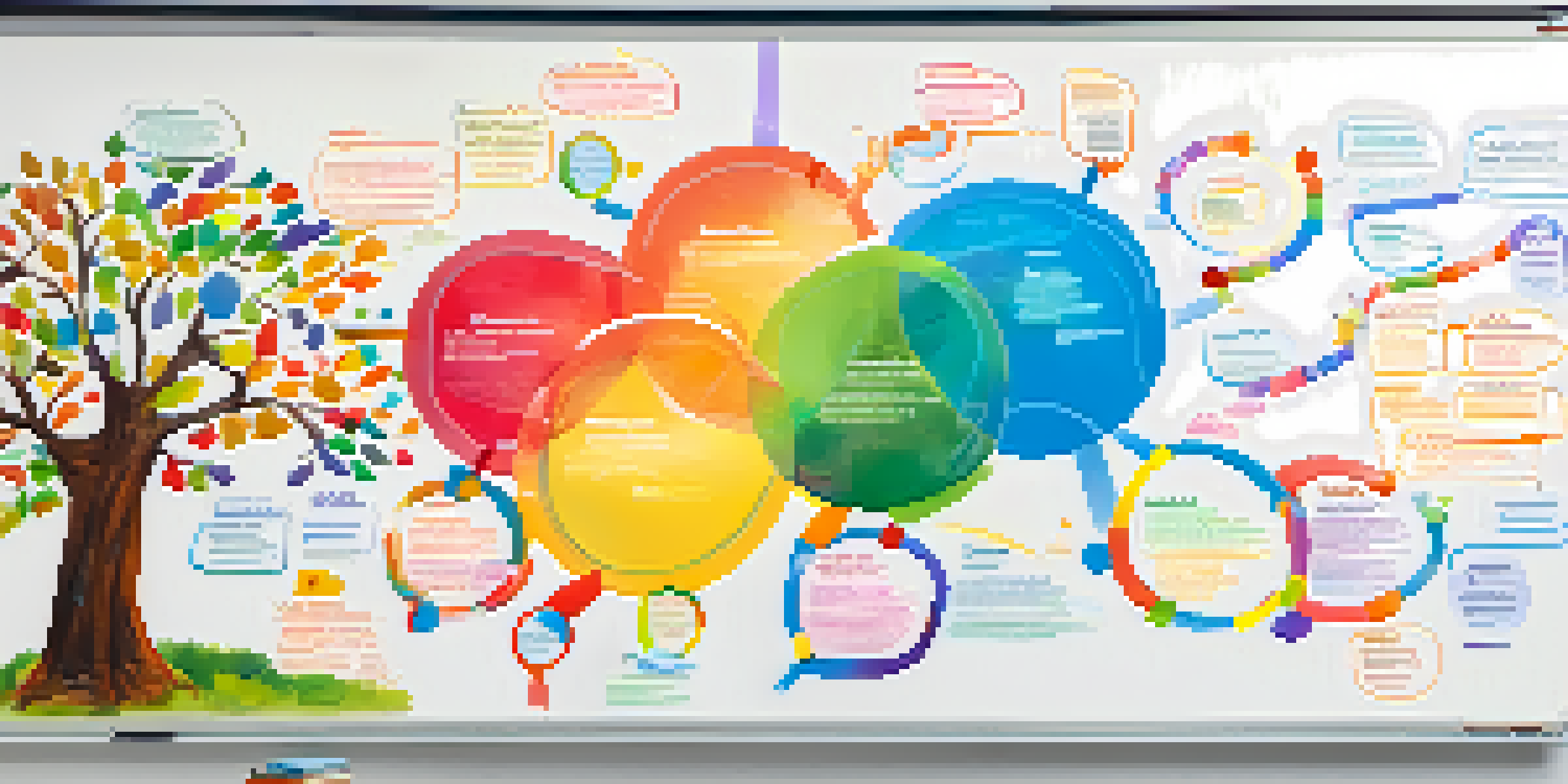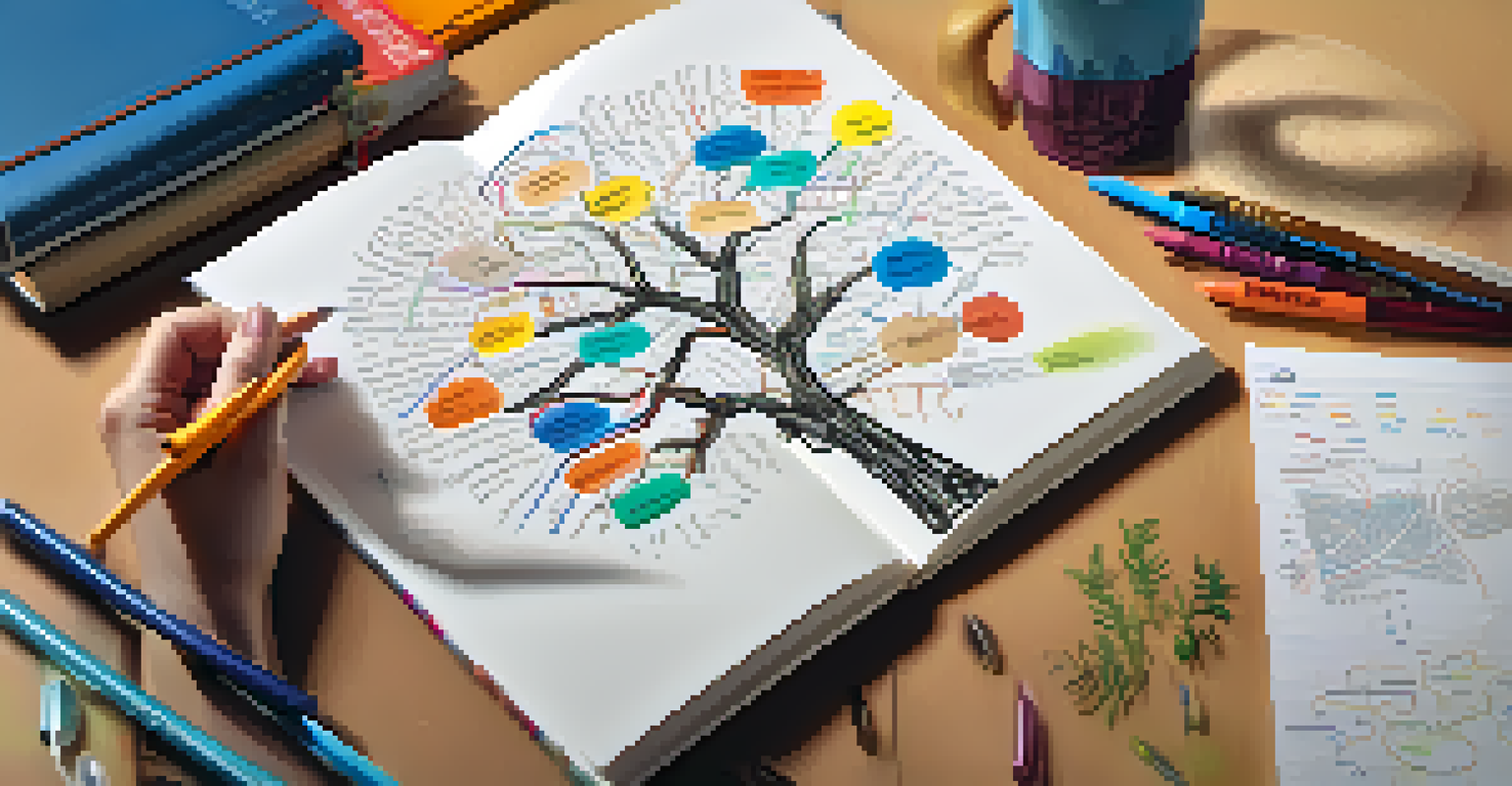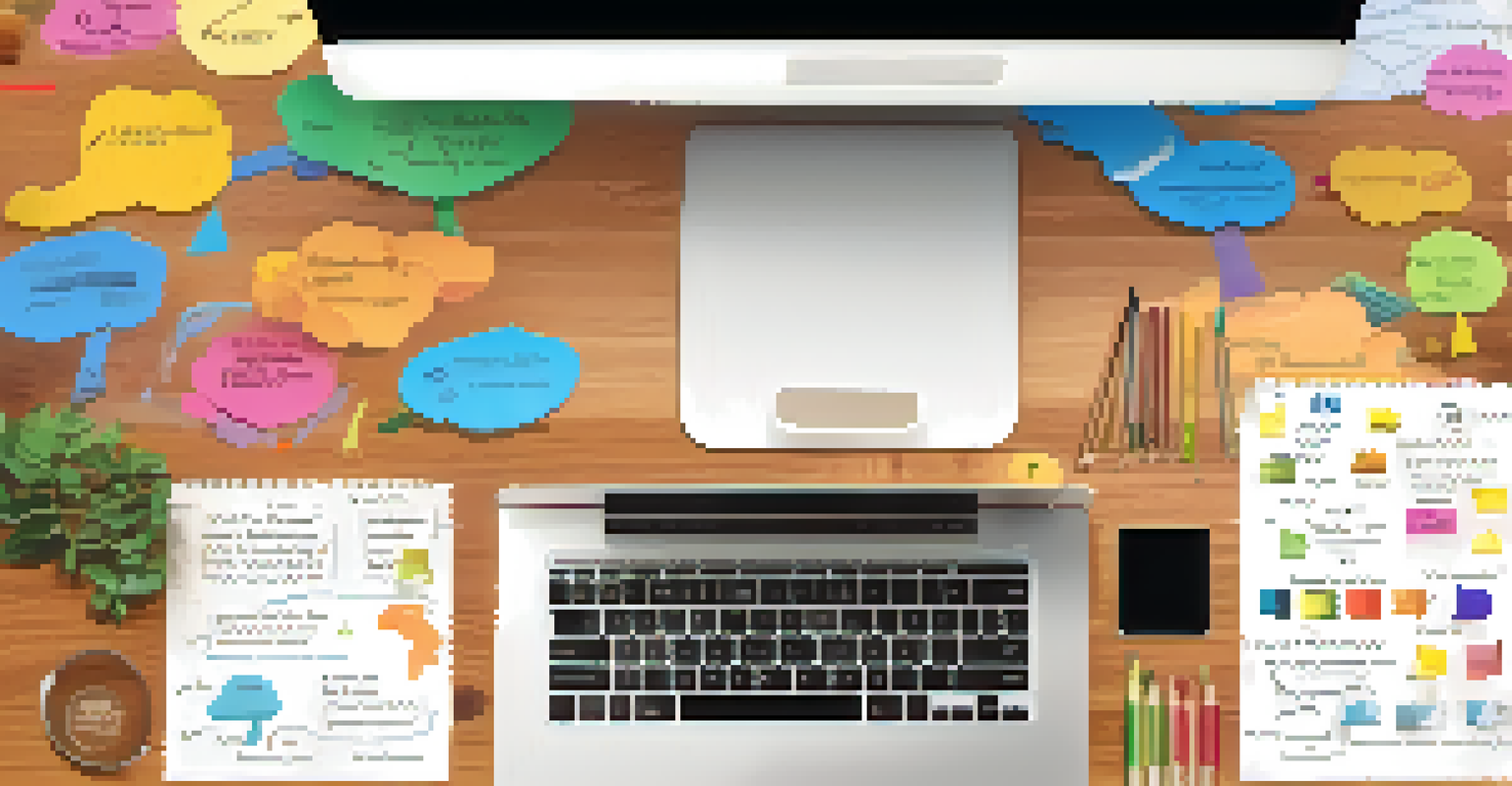Mind Mapping: Organizing Thoughts for Better Learning

What is Mind Mapping and Its Purpose?
Mind mapping is a visual technique that helps organize information and ideas. It allows you to create a diagram that represents your thoughts, branching out from a central concept. This method not only aids in memorization but also encourages creativity and critical thinking.
Mind maps are a powerful tool for visualizing knowledge and ideas.
Imagine a tree where the trunk is your main idea and the branches represent related thoughts. This visual representation helps you see connections and hierarchies among topics, making it easier to grasp complex subjects. By structuring your thoughts visually, you can engage both sides of your brain.
Ultimately, the purpose of mind mapping is to simplify the learning process. Instead of sifting through pages of notes or lengthy texts, you can condense vast amounts of information into a single, clear image, enhancing both retention and understanding.
The Benefits of Using Mind Maps for Learning
Mind maps offer numerous benefits that can significantly improve your learning experience. First and foremost, they enhance memory retention by allowing you to visualize connections between concepts. Studies show that visual learners often grasp information better when it’s represented graphically.

Additionally, mind mapping promotes active engagement with the material. Rather than passively reading or listening, you become an active participant in your learning journey. This hands-on approach keeps your mind alert and focused, making it easier to absorb and recall information later on.
Mind Mapping Simplifies Learning
Mind mapping transforms complex information into clear visual diagrams, enhancing retention and understanding.
Lastly, mind maps can help reduce information overload. When faced with a large volume of data, it’s easy to feel overwhelmed. By breaking information down into smaller, manageable parts and visually organizing them, mind mapping allows for clearer thinking and better organization of thoughts.
How to Create an Effective Mind Map
Creating a mind map is a straightforward process that can be tailored to your preferences. Start by writing your central idea in the middle of a blank page or digital canvas. From there, draw branches for key concepts related to your main idea, using keywords or short phrases for clarity.
The mind is not a vessel to be filled, but a fire to be kindled.
Next, expand on each branch by adding sub-branches that delve deeper into each topic. This hierarchical structure allows you to capture details without overwhelming yourself. Use colors, images, or symbols to make your mind map visually appealing and easier to remember.
Finally, review and revise your mind map as needed. This is a dynamic tool that can evolve as you learn more about the subject. By regularly updating your mind map, you ensure that it remains a relevant and effective study aid.
Mind Mapping Tools and Resources
In today’s digital age, there are numerous tools available that can help you create mind maps. Software like MindMeister and XMind offer user-friendly interfaces and various templates to get you started quickly. These tools often allow for collaborative features, enabling you to work with others in real-time.
For those who prefer a more traditional approach, pen and paper can be just as effective. Many learners find that the tactile experience of drawing their mind maps helps solidify their understanding. You can easily customize your layout and design, which can lead to greater engagement.
Enhances Engagement in Learning
By promoting active participation, mind mapping helps learners stay focused and absorb information more effectively.
Additionally, there are plenty of online resources, tutorials, and courses that teach mind mapping techniques. Websites and platforms like YouTube provide valuable insights and examples to inspire your creativity, ensuring you get the most out of this powerful learning tool.
Applications of Mind Mapping in Education
Mind mapping has found a special place in educational settings, proving beneficial for students of all ages. Teachers often use it to introduce new topics, allowing students to brainstorm and visualize their understanding. This collaborative approach fosters a sense of community and encourages participation.
Students, too, can utilize mind maps for various subjects, from planning essays to studying for exams. For instance, a mind map for a history project can help outline key events and their significance, making it easier to remember dates and details. This method promotes a deeper understanding of the material.
Moreover, mind mapping can be particularly helpful for visual learners who may struggle with traditional note-taking methods. By incorporating colors, images, and symbols, these learners can engage with the content on a deeper level, making the information more relatable and easier to recall.
Mind Mapping for Personal Development
Beyond educational settings, mind mapping can also play a significant role in personal development. Whether you’re setting goals, planning a project, or organizing your thoughts, mind maps can help clarify your objectives and streamline your actions. This technique encourages you to visualize the steps needed to achieve your aspirations.
For example, if you’re striving to improve your health, you might create a mind map outlining various fitness routines, meal plans, and motivational quotes. By laying out your goals visually, you can maintain focus and track your progress over time.
Versatile Tool for Personal Growth
Mind mapping aids in goal setting and self-reflection, providing clarity and insights for personal development.
Additionally, mind mapping can serve as a powerful tool for self-reflection. By mapping out your thoughts and feelings, you can gain insights into your emotions and identify patterns in your behavior. This self-awareness can lead to personal growth and a more fulfilling life.
Tips for Maximizing Your Mind Mapping Experience
To get the most out of mind mapping, there are a few tips to keep in mind. First, don’t be afraid to get creative. Use colors, drawings, and symbols that resonate with you, as this will make your mind map more engaging and memorable. The goal is to create a map that reflects your unique thought process.
Second, keep it simple. While it’s tempting to include every detail, focus on summarizing key ideas and concepts. This will help you avoid clutter and enhance the clarity of your mind map. Remember, the purpose is to simplify, not complicate.

Lastly, practice makes perfect. The more you use mind mapping, the more comfortable you’ll become with the technique. Over time, you’ll develop your own style and discover what works best for you, leading to a more effective learning experience.